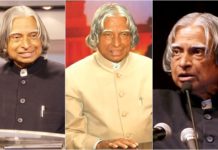Jagadish Chandra Bose
Father of Radio Science
Sir Jagadish Chandra Bose is one of most respected and prominent Indian scientist. He was a multi talented human being. He was good in every field he chose. He was a Bengali physicist, botanist, biologist archaeologist and also has written science fictions. He is well known for his experimentation with plant life. He figured out that plants and animals have much more in common than you think. Jagadish Chandra Bose discovered that plants, just like animals, are also sensitive to certain things like heat, light, cold, noise and other external stimuli. He is known as the “ Father of Radio Science ”
Acharya Jagadish Chandra Bose organised a very sophisticated and advanced instrument, the crescograph. The instrument was designed to observe and record a plant’s minute responses to the external stimulants. The instrument could magnify the motions in plant tissues to approximately 10,000 times of their real size. This helped Jagadish Chandra Bose to figure out and study the similarities between plants and other living organisms.
Bose was a nature lover. I guess that is the reason he could even imagine that plants could also have life and feelings. He never wanted to pluck flowers or cut down trees. He thought this could hurt them.
Early life and Career
The date of birth of Jagadish Chandra Bose was 30th November 1858, at a place Mymensingh, which now lies in Bangladesh. He was born in a Bengali Kayastha family His family was strictly committed to pure Indian culture and traditions.
His father, Bhagwan Chandra Bose, was one of the leading members of Brahmo Samaj. His father also a deputy magistrate as well as assistant commissioner by profession in Faridpur, Bardhaman and other places.
His father decided to admit Bose to a vernacular school for primary education, as it was the belief of his father that he should learn his mother tongue first, which was Bengali, and his people before learning any foreign language. He said in an interview that as he studied in a vernacular school he was surrounded with farmer’s and labour class students. He was friends with them and played around with those kids. This made him realise that how wrong the concept of lower class and ‘untouchability’ was.

Later Jagadish Chandra Bose was admitted to Hare School in 1869 and in St. Xavier’s School, Kolkata afterwards. In 1875, with his effort and hard work he passed the University of Calcutta entrance examination. He completed his graduation from St. Xaviers College, Kolkata. It was at this time when he started spending time with Jesuit Father
Eugene Lafont, who was responsible for developing Bose’s interest in natural sciences. He received a B.A. degree from Calcutta University in 1879.
After that Jagadish Chandra Bose wanted to go to London to compete in the Indian Civil Service entrance exams. But his father, as he was a Civil Servant himself, wished his son to be a scholar so that he would rule nobody but himself. Bose then went to London for studying medicine at the University of London. But he became severely ill and had to quit.
He later somehow managed to enter Christ’s College Cambridge with the recommendation of his brother-in-law Anandamohan Bose. He received a B.A. degree in Natural Sciences of Tripos from the University of Cambridge. Also a B.Sc. from London University in 1884. Along with that a D.Sc. from London University in 1896. Did you know the time Bose was attending classes at Cambridge, Prafulla Chandra Roy was a student at Edinburg ? Hence they both met in London and became very close friends.
Bose then returned to Kolkata and became a professor of physical science at Presidency College. But his salary was only half of what the Indian professors earned at that time. He felt insulted. So to establish his position, he did not accept the salary for 3 years. Finally the administration gave in and increased his salary, with a compensation of his previous 3 years’ salary as well. In 1917 he decided to quit his job and do something of his own. So he established the Bose Institute at Calcutta which was initially devoted only to the study of plants. Jagdish Chandra Bose was the director of the institute for 20 years until he died.
The best influence on Jagadish Chandra Bose was of Sister Nivedita, who supported him by every means. She made sure of the financial support and also helped in editing his manuscripts so that Bose could continue with his research and work.
Famous Experiment

The very first prominent microwave research of Jagadish Chandra Bose was that he managed to reduce the waves to millimetre level (about 5 millimetre wavelength). He did this because he realised the disadvantages of long waves to study their light like properties.
His first demonstration was held publicly in the Town Hall of Kolkata in November 1894, Bose displayed an experiment where he ignited gunpowder and managed to rang a bell at a distance making the use of millimetre range wavelength microwaves.
His most noteworthy work in the field of biophysics was the way he established the electrical nature of conduction of various stimuli (like wounds, chemical agents) in plants which were previously thought to have a chemical nature. He carried out a lot of experiments to prove this claim.
You might already know he was the first who studied the action of microwaves in plant tissues and the resultant changes in cell membrane potential. He also studied the seasonal effects on plants and also the effects of chemical inhibitors on plants stimuli and the changes due to temperature.
On 10th May 1901, the Central Hall of Royal Society in London was crowded with famous scientists. Everyone was waiting to know how Jagadish Chandra Bose experiments to establish that plants too have feelings like other living beings and humans.
He started the experiment by cautiously dipping a plant from stem to roots into a vessel containing bromide solution, which is actually a poison. He plugged in the instrument which he had invented and projected the lighted spot on a screen, to show the movements of the plant. As the pulse of the plant started beating, the spot began to move to and fro just like a pendulum. After a few minutes the spot started vibrating violently and came to an abrupt stop. The view was very similar to a poison ed rat fighting against death. The experiment proved that the plant had died when exposed to the poisonous bromide solution.
The crowd bursted into applauses and appreciation after the experiment. But there were also some physiologists who were not very happy and considered Jagadish Chandra Bose as an intruder. As a result, they knocked down the experiment. However this they did not break Bose’s confidence and he never gave up.
Using his crescograph, he continued his research displaying the response of plants to fertilizer, light rays and wireless waves. His instrument was highly acclaimed, particularly since the Path Congress of Science in 1900.
Legacy
Bose’s place in history has now got re-evaluated. Many of his instruments are still appreciated and used by scientists, even after 100 years later. The instruments like antennas, polarisers and waveguides are still in use in modern times.
On the occasion of his birth centenary in 1958, the JBNSTS scholarship programme was introduced in West Bengal. In his honour, India also issued a postage stamp, bearing his portrait in the same year.
Bose’s experiments which involved the millimetre-band radio waves were witnessed as an IEEE milestone in the field of Electrical and Computer Engineering. It was the first recognition of a discovery in India of the kind.
On 30th November 2016, Google Doodle celebrated Boss on his 158th birthday anniversary.
Honours
Sir Jagadish Chandra Bose was honoured with Companion of the Order of the Indian Empire in 1903. After a few years in 1912, he got honoured with Companion of the Order of the Star of India. He received the title Knight Bachelor in 1917. Three years later he became Fellow of the Royal Society. He also managed to become Member of the Vienna Academy of Sciences in 1928.
In 1927 he was made the President of the 14th session of the Indian Science Congress. Two years later, he was chosen a member of Finnish Society of Sciences and Letters. He was also the Member of the League of Nations’ Committee for Intellectual Cooperation.
He established the National Institute of Sciences of India (which is now named as the Indian National Science Academy). The Indian Botanic Garden got renamed to Acharya Jagadish Chandra Bose Indian Botanic Garden on 25th June 2009, to honour Bose.
Later life and death

Bose wrote two of the most illustrious books, which were named the ‘Response in the Living and Non-living’ published in 1902 and ‘The Nervous Mechanism of Plants’, published in 1926. Bose tried to improve another instrument, “the coherer”, which is used to detect radio waves.
Jagadish Chandra Bose was married to Abala, who was the daughter of a famous Brahmo reformer, Durga Mohan Das. They got married in 1887. Adala was a feminist and worked for women rights and reforms. She supported her husband throughout his scientific career.
Jagadish Chandra Bose died at the age of 78 on 23rd November 1937, in Giridih India.
Source : Youtube

























[…] Jagadish Chandra Bose : Father of Radio Science […]
[…] Jagadish Chandra Bose : Father of Radio Science […]